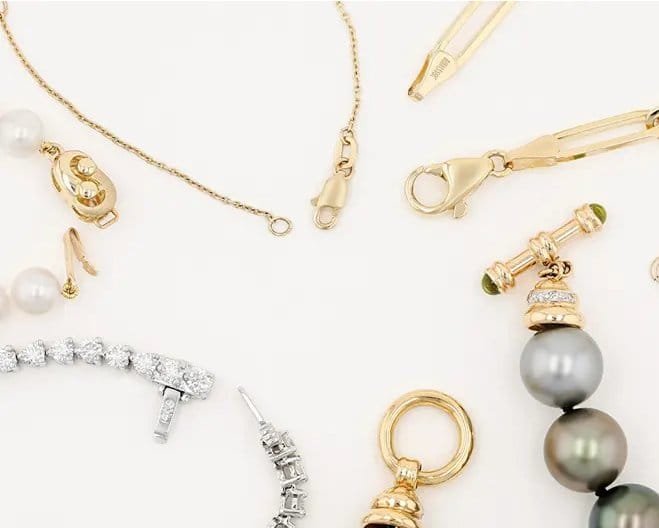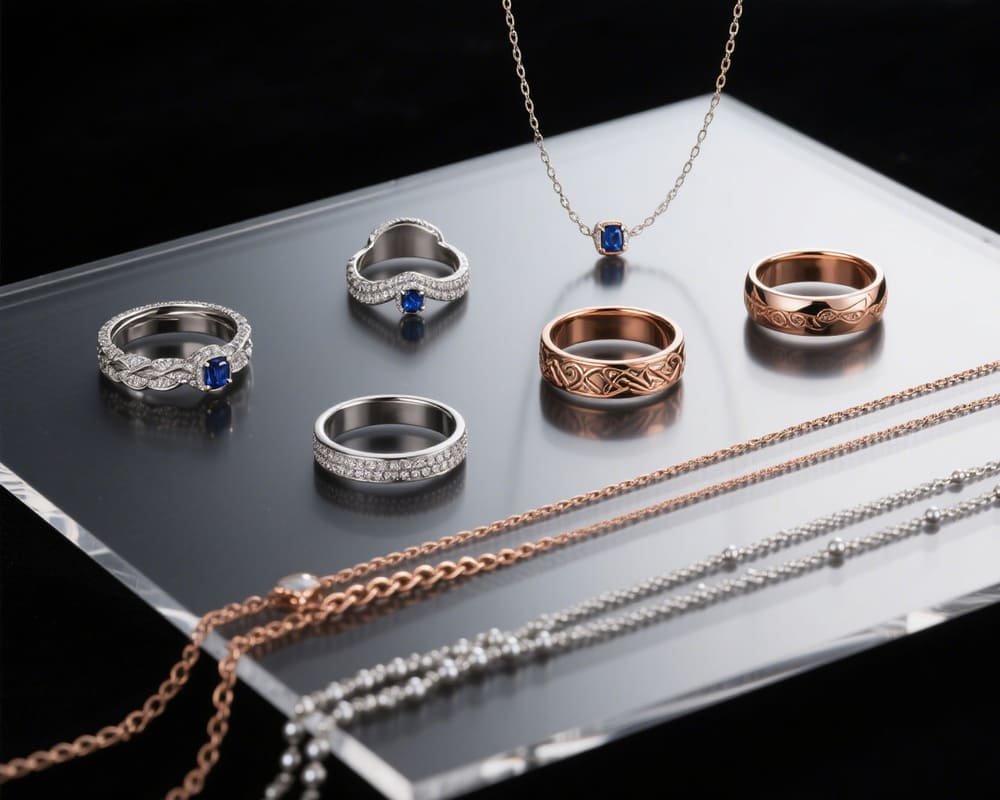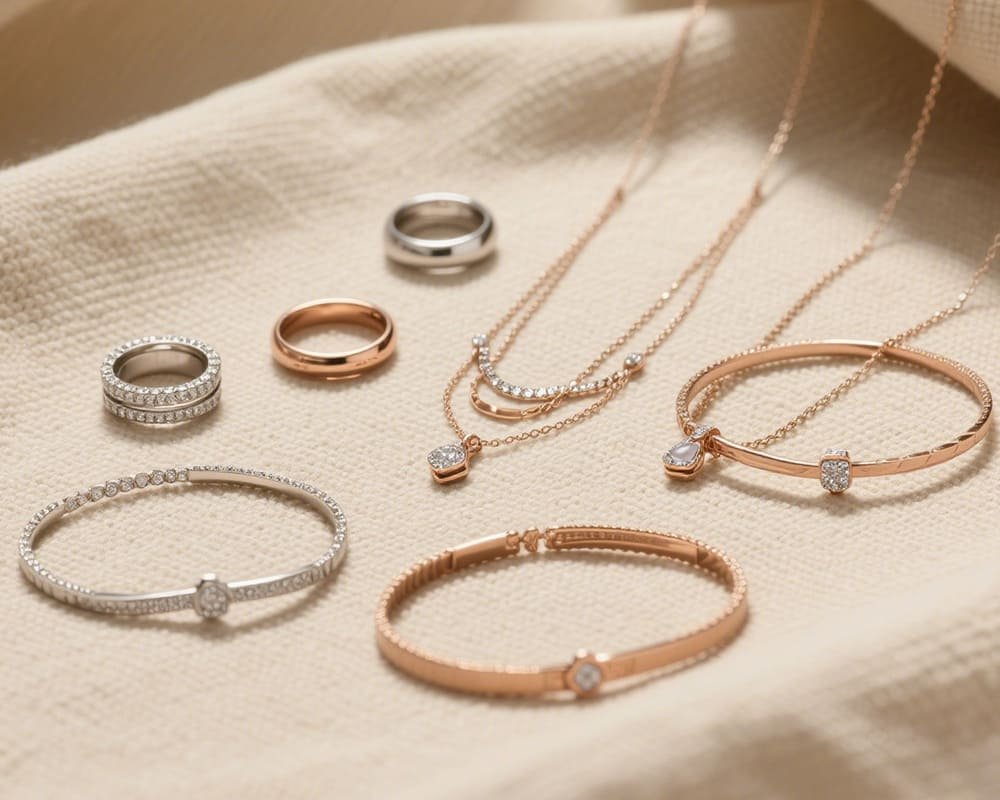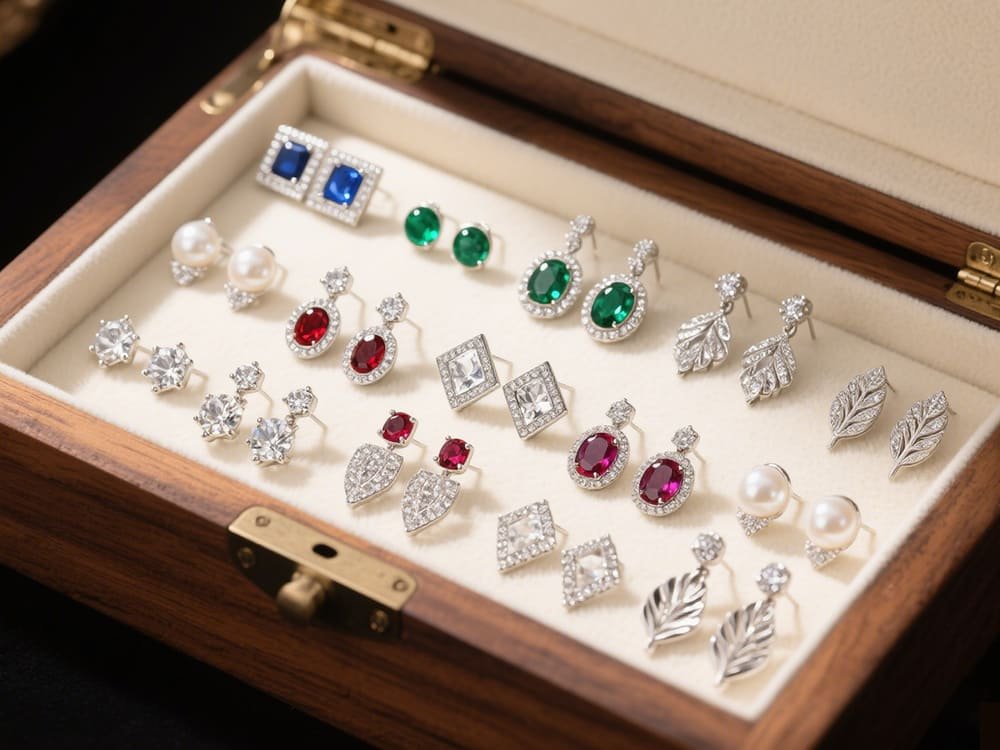When you open your jewelry box and put on your favorite ring or necklace with great anticipation, you are surprised to find a circle of green marks on your fingers, neck or behind your ears – does this make you confused or even disappointed? You may have suspected that it was an allergy problem, or you may have thought that you bought a fake. But in fact, jewelry turning green is a very common phenomenon and does not necessarily mean that your jewelry is of poor quality.
Whether you are a consumer who is new to jewelry or a merchant who has been operating a jewelry brand for a long time, this problem may cause you trouble. Understanding why jewelry turns green, how to prevent this phenomenon, and what to do when it has turned green is practical knowledge that every jewelry lover and industry practitioner should master.
As a professional custom jewelry wholesaler, Fulcol is well aware of the most important issues that consumers care about when buying and wearing jewelry. Combining years of manufacturing experience, material research and customer feedback, we bring you this detailed and practical guide to help you not only figure out “why jewelry turns green”, but also teach you how to avoid and solve this problem to ensure that your jewelry always shines like new.
Table of contents
Why does jewelry turn green?
Metallic ingredients are one of the “culprits of greening”
Many people think that if they buy “silver jewelry”, it will not turn green, but in fact, if the jewelry contains copper, nickel and other ingredients, it will undergo oxidation or corrosion reactions under certain conditions, resulting in green rust on the metal surface. This green substance is usually “patina” (copper oxide), which will transfer to the skin when it comes into contact with human skin, forming a disturbing green mark.
Especially in some low-cost alloy jewelry, the copper content may be very high. Even in 925 sterling silver jewelry, a small amount of copper may be added as an auxiliary metal to increase hardness, so there is a certain risk of “turning green”. Even if the gold plating process is excellent, if it is used for too long, the inner metal layer may still be exposed and oxidized after the outer electroplating is worn.
Your physique may also “accelerate the greening” process
Interestingly, not everyone will turn green when wearing the same jewelry. Some people wear copper jewelry intact for several months, while others only wear it for two days and get green marks. One of the important factors is the pH value of the skin.
Studies have shown that people with acidic constitutions and high sweat secretion are more likely to react chemically with metals, causing discoloration. For example, high-protein, high-sugar diets, high stress, and metabolic disorders in the body may change the composition of body fluids, thereby accelerating the oxidation of metals. Some women also experience changes in body acidity and alkalinity during pregnancy, causing jewelry that would not have turned green to suddenly turn green.
In addition, common skin care products, perfumes, lactic acid, urea in sweat, etc. may also react chemically with metals, causing the metal surface to change color.
Environmental humidity and usage habits are equally important
In addition to human constitution, external environmental conditions also directly affect whether jewelry is easy to turn green. Water vapor, sweat, sulfides in the air, and even chemical components in cosmetics and perfumes will accelerate the oxidation process of metals.
Especially in summer, wearing jewelry for outdoor activities, swimming, bathing, exercise, etc. will greatly increase the probability of jewelry “turning green”. If jewelry is in contact with alkaline substances such as laundry detergent, dishwashing liquid, and soap for a long time, it is also easy to produce corrosion reactions, damage the electroplating layer and cause color changes.
In short, the greening of jewelry is not caused by a single factor, but by a combination of multiple factors such as material, wearing habits, physical condition, and environmental conditions.

How to prevent jewelry from turning green?
As a custom jewelry manufacturer, we recommend that you start from the four dimensions of purchase, wearing, cleaning, and maintenance to effectively prevent the problem of jewelry turning green.
Choose the right material: avoid alloys with high copper content
If you sweat easily or your skin is acidic, it is recommended to choose materials with better anti-oxidation properties, such as:
- 925 sterling silver: Although it contains a small amount of copper, it is not easy to turn green if the electroplating process is excellent.
- K gold (such as 14K, 18K): high gold content, strong corrosion resistance, and stable color.
- Stainless steel 316L: affordable, strong anti-oxidation performance, often used in medical jewelry.
- Titanium, platinum: high-end jewelry selection, almost no discoloration, and will not cause allergies.
Fulcol strictly controls the metal ratio during the customization process. All jewelry products support material certification and testing to ensure that the risk of “greening” is controlled from the source, which is particularly suitable for brand customers or OEM buyers with high quality requirements.
Electroplating coating is the key line of defense
High-quality electroplating layers (such as vacuum plating and thick layer plating) can effectively block the contact between air and skin and metal, thereby delaying or avoiding oxidation. We recommend choosing jewelry plated with anti-oxidation metals such as rhodium, gold, and rose gold.
Fulcol uses PVD vacuum plating technology, which not only makes the electroplating layer more uniform and durable, but also has strong adhesion and is not easy to fall off. Some high-end products are also coated with a layer of nano-transparent protective film to effectively enhance wear resistance and corrosion resistance.
Correct wearing and daily habits
Small habits in daily wear will greatly affect the life of jewelry and whether it changes color:
- Try to take off jewelry when washing hands, bathing, swimming, and doing housework.
- Avoid spraying perfume, hairspray, and skin care products directly on the jewelry.
- Clean the jewelry in time after sweating to avoid corrosion caused by sweat residue.
- Minimize wearing time in humid, hot or sweaty environments.
- Before wearing jewelry, you can apply a layer of clear nail polish or vaseline on your skin as an isolation film to form a protective barrier.
Although these methods seem simple, they can greatly extend the service life of jewelry and avoid the trouble of greening.
Store jewelry properly
When jewelry is not worn, it should not be left alone. It is recommended to:
- Store each piece of jewelry separately in a sealed bag to avoid mutual friction and air contact.
- Place it in a dry box and use moisture-proof agent or activated carbon to absorb moisture.
- Wipe it regularly to keep the surface clean and bright to avoid oxidation accumulation.
- It is recommended to separate electroplated jewelry from highly active materials such as pure gold and pure silver to prevent mutual influence between materials.
What if the jewelry has turned green?
When you find that the jewelry has turned green, don’t panic. In most cases, it can be restored to its original state through proper treatment.
You can clean it at home like this
- Baking soda + water: Mix baking soda with a small amount of clean water into a paste and wipe it gently with a soft cloth.
- Toothpaste cleaning method: squeeze a small amount of toothpaste on a damp cloth, wipe in circles, and then rinse with clean water.
- Vinegar + salt mixture: add a pinch of salt to white vinegar, dip a cotton cloth in it and wipe the jewelry, rinse after a few minutes.
- Special silver cleaning cloth or polishing cloth: suitable for removing mild oxidation marks, especially for 925 silver products.
These are low-cost and efficient home methods, suitable for jewelry that has slightly turned green.
Use professional tools and products
If you are a jewelry lover or operator, you can also choose:
- Ultrasonic cleaning machine: especially effective for jewelry with intricate details.
- Silver cleaning water, copper cleaning solution: suitable for deep cleaning, but be careful to avoid corrosion when using.
- Nano polishing pen: used for fine and small oxidized areas.
Please note that some chemical cleaners may cause damage to materials such as gemstones and natural shells. Be sure to understand the scope of application before use.
When is professional repair needed?
When the jewelry is seriously discolored, faded, the electroplating layer falls off, or metal corrosion has occurred, it is recommended to seek professional jewelry repair services. Fulcol provides a full range of after-sales processing and refurbishment services, especially for high-end customers and brand OEM customers, which can be regularly recycled and refurbished to enhance brand value and user experience.

Buy jewelry that is not easy to turn green?
As a consumer, in addition to learning how to protect, it is more important to choose the right jewelry from the source. The following suggestions will help you make a wise choice.
Ask the right questions and understand the material of the product
When buying jewelry, please take the initiative to ask the following questions:
- What is the metal base of this product? Does it contain copper?
- Is there electroplating? What is the thickness of the electroplating? Is it water electroplating or vacuum electroplating?
- Is there a material testing certification (such as SGS, RoHS)?
- Does it support refurbishment or after-sales service?
A brand or supplier who is willing to answer these questions in detail is often trustworthy.
View process and certification information
Professional custom jewelry manufacturers usually provide detailed material descriptions, certification reports, process flows, and even video demonstrations in product descriptions. For example:
- Material: 925 silver / brass / 304 stainless steel / alloy.
- Process: thick layer electroplating (thickness ≥ 0.05μm).
- Certification: SGS nickel release test / REACH test, etc.
Find the right partner – Fulcol’s manufacturing advantages
As a jewelry wholesaler and custom jewelry manufacturer with more than ten years of manufacturing experience, Fulcol has always adhered to the concept of “material selection, precision process, and after-sales guarantee”. Our advantages include:
- Professional material selection: silver, K gold, and environmentally friendly copper materials can be customized according to customer needs.
- Seiko electroplating: high-quality thick electroplating is used, which is more durable in anti-oxidation.
- Strong OEM/ODM customization capabilities: support drawing mold opening, style development, and brand customized packaging.
- Wholesale advantages: large quantity discounts, fast delivery, and support for global delivery.
We not only serve terminal brands and e-commerce sellers, but also cooperate with a large number of retailers and overseas boutique chains to provide them with long-term and stable anti-oxidation jewelry products.
| Start Your Custom Order | Email: info@fulcol.com | Number: +86 13055603907 |
The greening of jewelry is not “buying inferior goods”, but a natural result of metal oxidation, especially in copper or copper-plated jewelry. We can extend the service life of jewelry and maintain its luster and beauty through scientific understanding, reasonable material selection, improved wearing habits and mastering cleaning skills.
If you are looking for high-quality jewelry that is not easy to turn green, whether it is wholesale procurement, brand customization, or personalized gift development, Fulcol will be your trusted partner. We not only provide high-quality products, but also are happy to share knowledge on use and maintenance, and accompany you to protect every shine.






